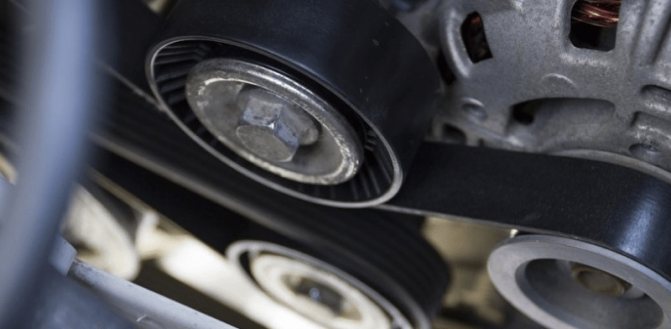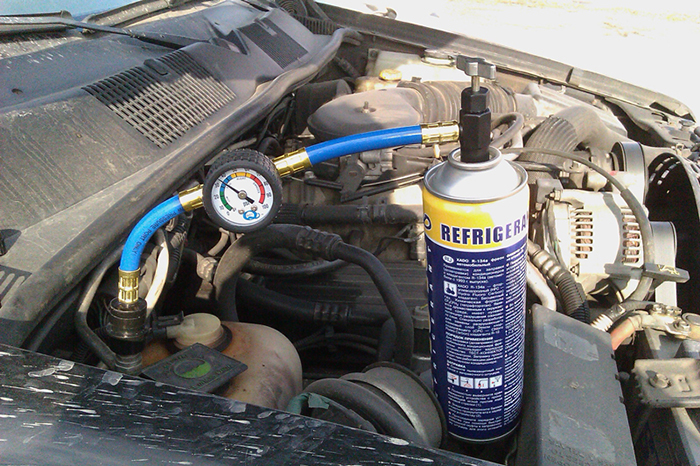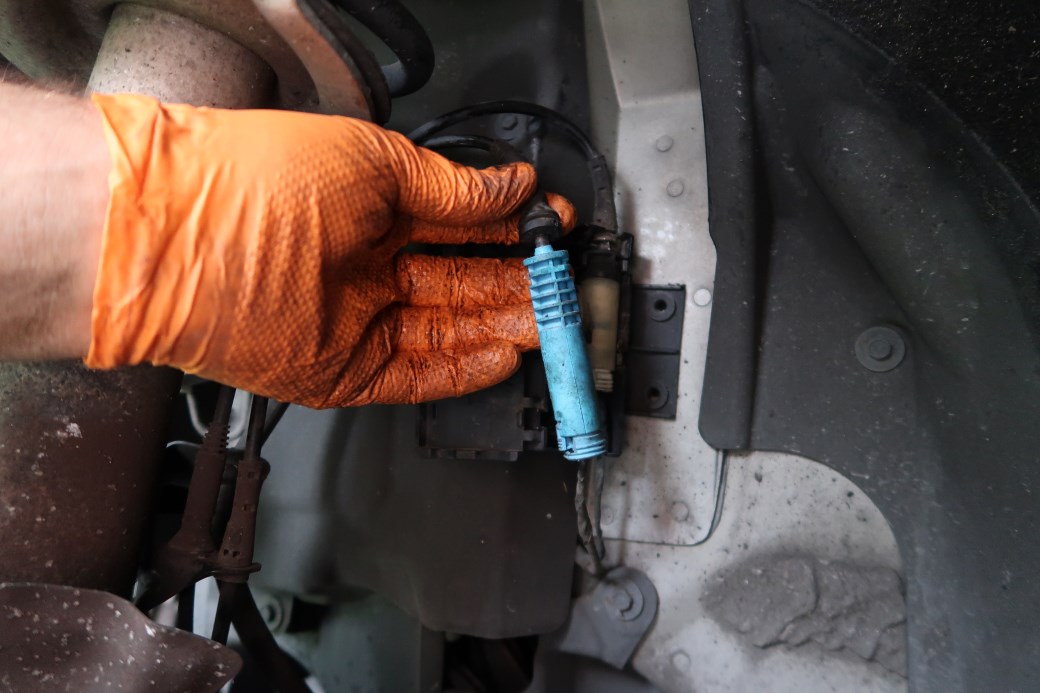 In the life of any driver there comes a time when he is faced with the problem of low battery. And it doesn’t give the chance to start the car engine. Especially often this happens in the winter because, at a negative temperature, the battery does not hold its charge.
In the life of any driver there comes a time when he is faced with the problem of low battery. And it doesn’t give the chance to start the car engine. Especially often this happens in the winter because, at a negative temperature, the battery does not hold its charge.
And here he has a question, what to do next? You can, of course, buy and put a new battery. But its cost is not small, so replacing the battery will fly into good money. There is another more cost-effective option to charge the battery.
1. How do I know the battery is dead?
The battery charge can be checked in the following ways:
- By measuring the electrolyte density with a hydrometer.
- Current load is using a multimeter or a load plug.
Consider the first option. A hydrometer is a device that measures the density of the liquid. It consists of a container with a pear for the intake of liquid and a float floating inside and has the corresponding graduation. When the battery is fully charged the hydrometer will show a density of 1.28 g/CC. The density must be 1.20 g/CC when the battery is discharged in half., The electrolyte density is 1.10 g/CC if the battery is completely dead.
The measurement of density must be done in all banks battery what is allowed difference within +- 0.01 g/cubic cm. If the density of the electrolyte in the various banks will differ by 0.10-0.15 g/CC, then most likely the battery is faulty and requires replacement.
Consider the second version of the assessment battery. The load plug is, in fact, a voltmeter with a parallel resistance connected to its terminals, which has a value of 0.018-0.020 Ohms (for batteries 40-60 Ah). The load plug is connected to the battery outputs, and after 5-10 seconds its readings are taken.
To measure the assessment battery, you have to load the battery by turning on, for example, high beam or Parking lights. The voltage should reach 11.2 V. if the battery is sufficiently charged. The voltage can also be measured when the engine is started. In this case, the voltage should not be less than 9.5 V. If the voltage is lower, then either the battery is partially discharged, or there are faults of the starter. For measurements, it is necessary to use voltmeters of high accuracy, as the battery charge is measured in tenths of a volt. For an accurate assessment, the error of the device should not be less than 0.1%.
2. How to charge?
Charge car batteries with chargers that can convert alternating current into direct current. Charging can be done in the garage, removing the battery from the car or without removing it. The main thing is to comply with all safety regulations.
Safety instructions for charging batteries:
- Be sure to wear chemically resistant (to acids) glasses and gloves.
- Charging should be carried out in a room that is well ventilated. During charging, the battery releases toxic substances (Arsin, sulfur dioxide, etc.). These substances settle on all surfaces of the room and can poison owners for a long time.
- Cannot be used to charge the living room.
- Do not use an open flame, smoke or devices that spark when charging near the battery (or in the same room). This is because a lot of hydrogen is released during charging. And hydrogen, mixing with oxygen, forms a very explosive mixture.
- The network that powers the charger must be supplied with a fuse. The fuse can turn off the power if a short circuit occurs.
The process of preparing to charge the batteries can be described in these steps:
- Clean the battery from dirt and dust, and carefully remove the terminals.
- Inspect it for mechanical damage, “boiling ” of the electrolyte and leakage.
- Open the battery plugs, inspect each of the cans and assess the level of electrolyte in them. If the electrolyte is not enough, this shortage should be filled with distilled water.
- Pay attention to the color of the electrolyte and its transparency. The electrolyte should be completely transparent. If the electrolyte has a dark or different color, resembles a suspension or flakes float in it, then such an electrolyte is not suitable for charging.
After the preparatory work, you can start the charging itself. Important point! Terminals from the charger are first connected to the battery, and only then connect the charger to the network.
There are three main methods of charging batteries, the effect of which on the battery itself is almost the same:
- Using constant voltage.
- Using direct current.
- Combined method.
Charging batteries using DC voltage implies a direct relationship between the battery level and the amount of charging voltage. For example, at a charging voltage of 14.4 V, the battery will be charged in 2 days, and at a voltage of 16.5 V – in just one day. Since the current can sometimes reach high values (45-55 A), chargers have limitations that supply no more than 20-25 A.
This method is safe, gentle to the battery, does not require the constant presence of a person and control on his part. The indicator will notify you when charging is complete. The full voltage of the charged serviceable battery should be 14.4 V.
Charging batteries using direct current requires constant presence and control on the part of the person. With such a charge, it is essential to adjust the flow throughout the process. You need to choose a current that is equal to 1/10 of the battery capacity. For example, if the capacity is 70 Ah, you will need to use a current of 7 A, and a full charge will take 10 hours.
The current must be controlled hourly. The battery will be considered fully charged if the charging voltage is stable for 1-2 hours. The last stage of charging is accompanied by the” boiling ” of the electrolyte in the banks and the abundant release of gas, so here you should be extremely careful. This “boiling” and the need for constant human control-the main drawbacks of this method of charging.
Combined charging method is the most modern and most common among the new chargers. With this method, the battery is first charged with a constant current, and in the end – with a constant voltage. The whole process is fully automated and does not require human participation and control. When the battery is fully charged, the charger itself is disconnected.
Sometimes it happens that there is no time to start the engine and need a speedy charge. For express charging, remove the battery terminals and connect the charger terminals, observing the polarity. Adjust the current regulator to the maximum and detect 15-20 minutes, then turn off the charger. This option is not very useful for the battery and reduces its life, so use it too often is not recommended.
It is always better to give preference to a full and careful battery charging. Complete charging is much better to preserve the functionality of the battery, and with such a charge it will last much longer than with express charging.
New batteries are usually fully charged. But sometimes it happens that because of the long lying on the shelves, they partially lose their charge. These batteries before operation it is necessary to “bring to mind.” To do this, you need a few hours to charge them by DC voltage with a low current value. New batteries cannot be charged with direct current or rapid charging.
Sometimes, motorists at the full discharge of the battery in extreme conditions do so-called “lighting” from the battery of another car. This is a hazardous process that is not officially sanctioned by the manufacturers. So if not handled properly, the vehicle can be removed from the guarantee or insurance. “Light up” can only be using special cables and with full confidence in the serviceability of the donor battery and the battery-acceptor.
The process takes place within 2-10 minutes, and it is better to move away during it and not to touch the cables. It is not recommended to “light” at temperatures below 15 degrees Celsius.
3. How long does it take to charge?
The charging time of the car battery depends on many factors:
- How badly the battery was discharged.
- What method to charge.
- The quality of the battery and charger.
In this matter, the correct solution is to focus on the ammeter or charger indicator or the charge indicator in the battery itself, if it is mounted in it. The indicator on the battery itself is straightforward to understand. All values must be indicated on the label. Typically, the green light means that the battery is charged, and the red light means that it is discharged.
As for the indicators on the charger, there may be several bulbs that signal the different stages of the charging process. To accurately understand them, it is necessary to read the instruction manual to the charger.
On chargers that charge by DC voltage, the best indicator is the ammeter. When its arrow drops to zero-this is a clear sign of a full charge of the battery. Usually, complete charging by DC voltage takes an average of one day. By changing the voltage value, it can be both accelerated and extended.
For chargers that charge by DC to calculate the charging time of the battery, use this formula: the battery capacity is divided by the value of the charge current and multiplied by 1.2. It will give an approximate time value for a full charge. Usually, complete charging by DC takes 10-12 hours but depends on the current (the lower it is, the longer the battery will be charged and vice versa).
4. How and why to check the electrolyte level?
The electrolyte consists of distilled water and acid. If the battery is used under standard conditions, it will not require additional maintenance. But, if you often go on long trips or affect the battery with high temperature, the water can evaporate. Therefore, for the normal operation of the battery should periodically monitor the level of the electrolyte.
Read also: Best Battery Maintainer – Buyer’s Guide – https://carinmydna.com/best-battery-maintainer/
Low electrolyte level leads to oxidation of the battery plates and their destruction, because of what it will start to lose its power and quickly fail. Setting this value too high level of electrolyte leads to the fact that acid damages the outer part of the battery. Thus, the proper concentration of the electrolyte is the key to the normal functioning of both the battery and the car as a whole.
How to check the electrolyte level in the battery? Before you start the test, you need to determine which battery is installed in the car: collapsible or non-separable. If the battery is unassembled, then you can find out the level of the electrolyte in it on the built-in scale. Non-separable batteries with a low electrolyte level are not subject to further operation. If the battery is collapsible, then to check the electrolyte level it is also possible to look at the built-in scale. The value must be between the maximum and minimum levels. But, if there is no scale or the corresponding marks are not applied to the body, then to check the electrolyte level, the following actions must be performed:
- Disconnect the cables from the battery and clean it from dirt.
- Remove the battery cover with a screwdriver.
- Using a glass tube with an inner diameter of not more than 5 mm, measure the electrolyte level (lower the tube into the battery fluid and plugging its outlet with a finger, pull out and look at the electrolyte level).
Typical is the electrolyte level from 12 to 15 mm. If the electrolyte level is too low, it is replenished with distilled water. After refilling the water, the battery is charged. If there is a surplus of electrolyte, it is removed with a syringe or pear.
5. How long should the battery last?
Most modern batteries are non-repairable. The average service life is 2-3 years or 70 yew. Km. It is at such a period; the manufacturer gives a guarantee on their products. The battery is a consumable, like a cartridge in the printer. Of course, sometimes it happens that the batteries serve for 5-6 years, but you can not rely on such devices. They could go down at any moment. So, if you go on a long trip and you have an old battery in the car, it is better to replace it.
Causes of battery failure:
- Corrosion processes inside batteries that destroy metal plates and turn them into dust.
- Short circuit, which is equivalent, in most cases, the final failure. If this happens to a new battery, it must be changed under warranty.
- Deep discharge, which provokes the formation of lead sulfate crystals, and this reduces the parameters of the device. Also, a thick discharge increases the freezing temperature of the electrolyte in the battery to -5 degrees Celsius, and if the electrolyte freezes, it will be impossible to resume the battery, as the ice will damage the internal elements of the device.
- Strong battery recharge, which leads to a rapid “boiling” of water from the electrolyte. And if the battery is not serviceable, it is equivalent to its failure.


